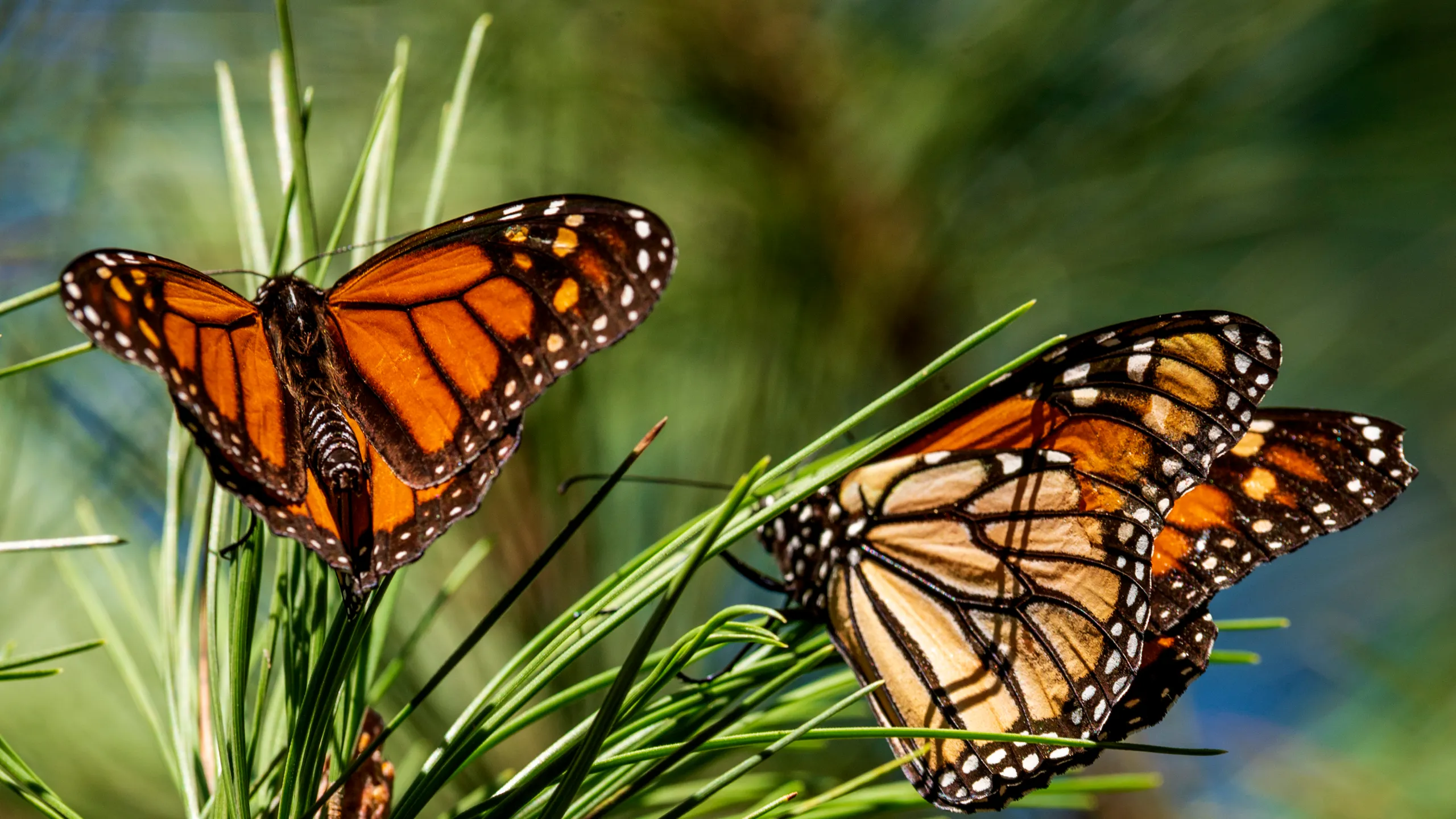The population of monarch butterflies inhabiting the Mexican forests, where they seek refuge during the winter months, has plummeted to alarming levels, reaching the second-lowest figure on record.
The population of monarch butterflies inhabiting the Mexican forests, where they seek refuge during the winter months, has plummeted to alarming levels, reaching the second-lowest figure on record.
According to the latest annual study conducted by Mexico’s Protected Natural Areas Commission and the World Wildlife Fund (WWF), the iconic orange-and-black insects were only documented in 2.2 acres (0.9 hectares) of forest spanning several Mexican states.
This stark contrast is particularly distressing when compared to their presence in the mid-1990s, when monarch butterflies could be found across approximately 45 acres of the same forested areas, primarily composed of pine and fir trees along the border between Michoacan and Mexico states.
The 2023-2024 winter season witnessed a significant decline in monarch butterfly populations, marking a nearly 60% decrease from the previous year. Biologists attribute this dramatic nosedive to higher-than-usual temperatures and severe drought conditions, particularly in the northwestern U.S. states of Washington, Oregon, and California, where the butterflies primarily reproduce.
These adverse weather patterns, exacerbated by climate change, have led to a scarcity of milkweed, the essential plant where monarch butterflies lay their eggs and upon which their caterpillar offspring depend for sustenance.
In what is considered one of the most remarkable wildlife migrations on the planet, monarch butterflies embark on a journey spanning up to 2,800 miles (4,500 km), traveling from regions as far north as Canada to seek refuge in the warmer climates of Mexico during the winter months. Millions of these delicate creatures cling to trees in the Mexican forests, sheltering themselves from the rain and cold.
While monarch butterfly populations are known to fluctuate from year to year, the recent survey results underscore a concerning trend. Just three years prior, in 2021, the same survey reported a 35% increase in monarch butterfly coverage, with populations spanning approximately 7 acres. This inconsistency highlights the vulnerability of the species to environmental pressures and underscores the urgent need for conservation efforts.
Environmental officials and activists have called for immediate action to address the threats facing monarch butterflies, including habitat loss and the widespread use of herbicides that decimate milkweed populations.
Jorge Rickards, head of WWF’s Mexico office, emphasized the importance of remaining vigilant in protecting these iconic insects. “We can’t lower our guard,” Rickards stated during a press briefing following the release of the latest population data.
Efforts to conserve monarch butterfly populations must encompass a multifaceted approach, including habitat restoration initiatives, increased protection of critical breeding grounds, and strategies to mitigate the impacts of climate change. Collaboration among governments, conservation organizations, and local communities will be essential in safeguarding the future of these beloved butterflies.
As monarch butterflies continue to face mounting challenges, the urgency to address their plight has never been greater. By taking decisive action now, we can ensure that future generations will have the opportunity to witness the awe-inspiring beauty of these magnificent creatures gracing our skies.
